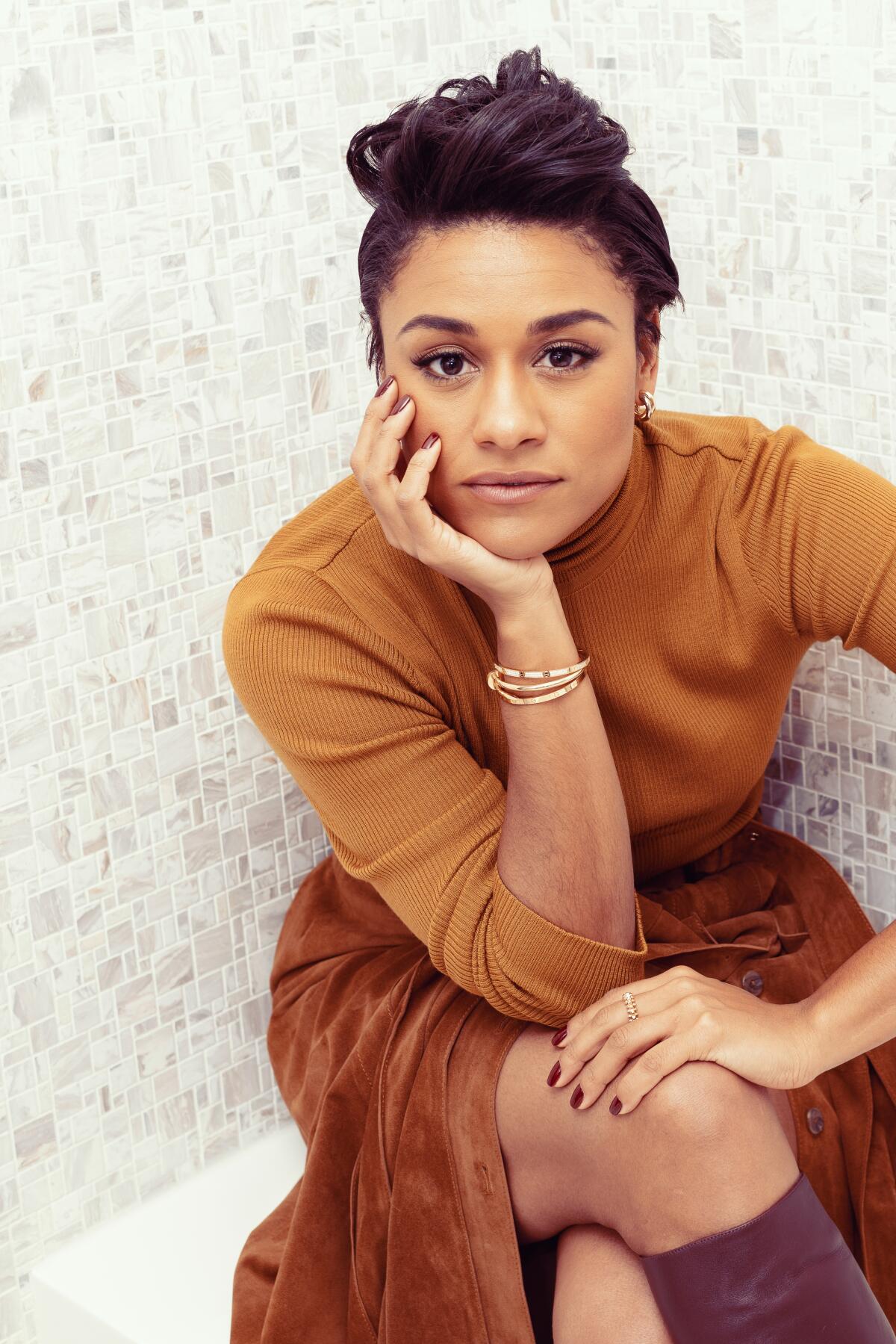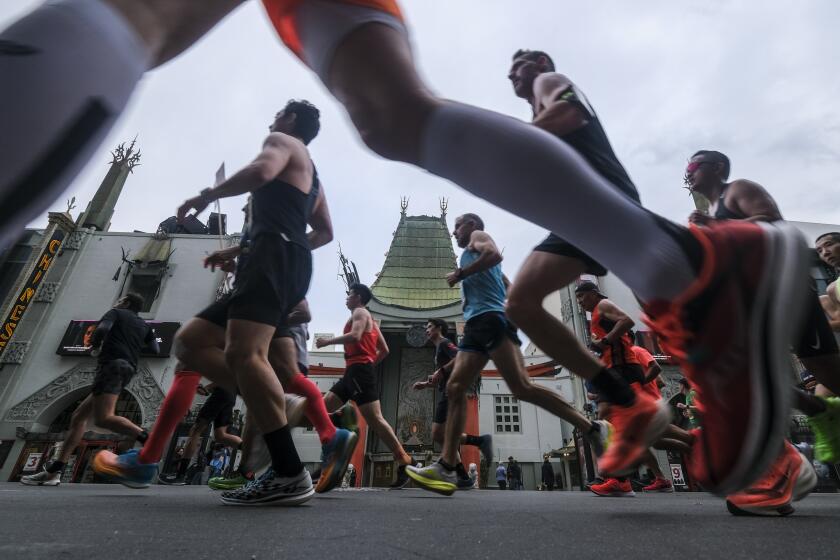Ariana DeBose wants you to feel Anita’s presence before you even hear her

- Share via
Ariana DeBose is not Anita. She doesn’t even speak Spanish. Hearing her, seeing her in her civilian guise (really, how long before she becomes a Marvel heroine?), it becomes almost humorously clear just how much of a performance her star-making turn in Steven Spielberg‘s remake of “West Side Story” is.
Then again, talking with DeBose, you learn just how much Anita is her.
“One of the first conversations we had when I was auditioning — Tony [Kushner] was there (I’m such a big Tony Kushner fan; ‘Angels in America’ changed my life), Steven was there,” DeBose says via Zoom, lounging behind large eyeglasses under a modern, asymmetrical haircut. “So, yikes, wow. They asked me if there was anything I wanted to know. I said, ‘I’m Afro-Latina, and that would inform everything about this character, by virtue of how she would walk through her community. If you’re not interested in exploring that, you shouldn’t hire me.’ And Tony was like, ‘OK, let’s go.’ ”
Those who’ve seen her only in her 1957 Puerto Rican-immigrant onscreen persona may be surprised DeBose has no discernible accent. She doesn’t even have a Carolinian one, despite being a Wilmington native raised in small towns in North Carolina. She and her schoolteacher single mother lived with DeBose’s grandmother; the women started the young girl in dance classes at age 3.
“When I think of growing up, I see dance, I hear music and I think of teachers. When I dance now, it’s very spiritual to me. I see color. I dance colors. Music shows me colors. I frequently say, ‘I dance music; the music does not dance me.’
“When I need to process, I move. In my childhood, it was the thing that helped me process whatever I was seeing,” she says, citing “microaggressions” she experienced as a brown child with a white mother.
If Anita weren’t a dancing role, DeBose’s stamp on her would still be indelible because of the life bursting from her version of the character, how her fierce love for Bernardo and her maternal leanings toward Maria bend the ambitious young woman’s trajectory. But … Anita does dance. Boy, does she dance.
- Share via
A clip the “America” number from Steven Spielberg’s “West Side Story” (2021)
DeBose, who has been featured on “So You Think You Can Dance” and in “Bring It On: The Musical” and received a Tony nomination for “Summer: The Donna Summer Musical,” imbues Anita with powerful physicality.
“I speak dance better than I speak English,” she says, screwing up her face, laughing. “That is a reality. I understand body language.”
That fluency in physical vocabulary shows up in her acting. Her kitchen scene with boyfriend and Sharks gang leader Bernardo, his younger sister Maria, and Chino, the friend he wants Maria to date, is a lesson in conveying relationships, intention and status — off the text. The way Anita shifts tone, inflection, depending on to whom she’s speaking; the way she cajoles or scolds reveals much.
“You should feel her in the room before you hear her. You don’t need to hear her to know how she feels about something. That was a conscious decision — although I will say, nonverbal communication does come naturally to me. If there’s something I want you to know, you will see it right here.” DeBose chuckles, pointing behind those glasses.
In perhaps DeBose’s finest moment as Anita, she manages to navigate the difficult turn in the song “A Boy Like That.” Anita goes from rage at Maria for consorting with the man who killed Bernardo, to accepting that Maria has to be with him, all in the space of a 5 ½-minute duet.
The actress says it was all about “separation of church and state, because if Maria said to Ariana DeBose, ‘You were in love, or so you said / You should know better,’ I would have smacked the crap out of that little girl. But Ariana is not Anita. Anita knows the greatest act of love is to exhibit forgiveness in the face of extreme grief. At the heart of everything, Anita was trying to build pure love. She and Bernardo chose each other; you see it at the end of ‘America.’ That turn was about forgiveness.”
DeBose was braced for the challenge of reinterpreting a role that had won an Oscar for Rita Moreno’s beloved performance in the 1961 film. “When I first met her, I had a full panic attack and was very awkward,” DeBose says of meeting Moreno, who has a new role in the updated film. “But she was incredibly gracious with me. She empowered me, she made space for my anxiety. She said, ‘What do you want to know?’ I said, ‘I want to know whatever you want to tell me.’ She said, ‘You’ve got this. Give her everything that makes you unique and special.’”
The entire production made it all about joy. “This was one of the most accepting experiences I’ve ever had. I got to fully embrace my Hispanic heritage ... and no one was hating on me because I didn’t speak Spanish. They took my hand and said, ‘Let’s learn this Spanish!’
“You always hear people say, ‘I spent six months on this film, and we were in the trenches and I was depressed’ … that’s not what this was. This was joy every day we got to go to work.”
Our BuzzMeter experts tell us what films and performances will win on Oscar night. Think you can do better?
More to Read
Sign up for The Envelope
Get exclusive awards season news, in-depth interviews and columnist Glenn Whipp’s must-read analysis straight to your inbox.
You may occasionally receive promotional content from the Los Angeles Times.











